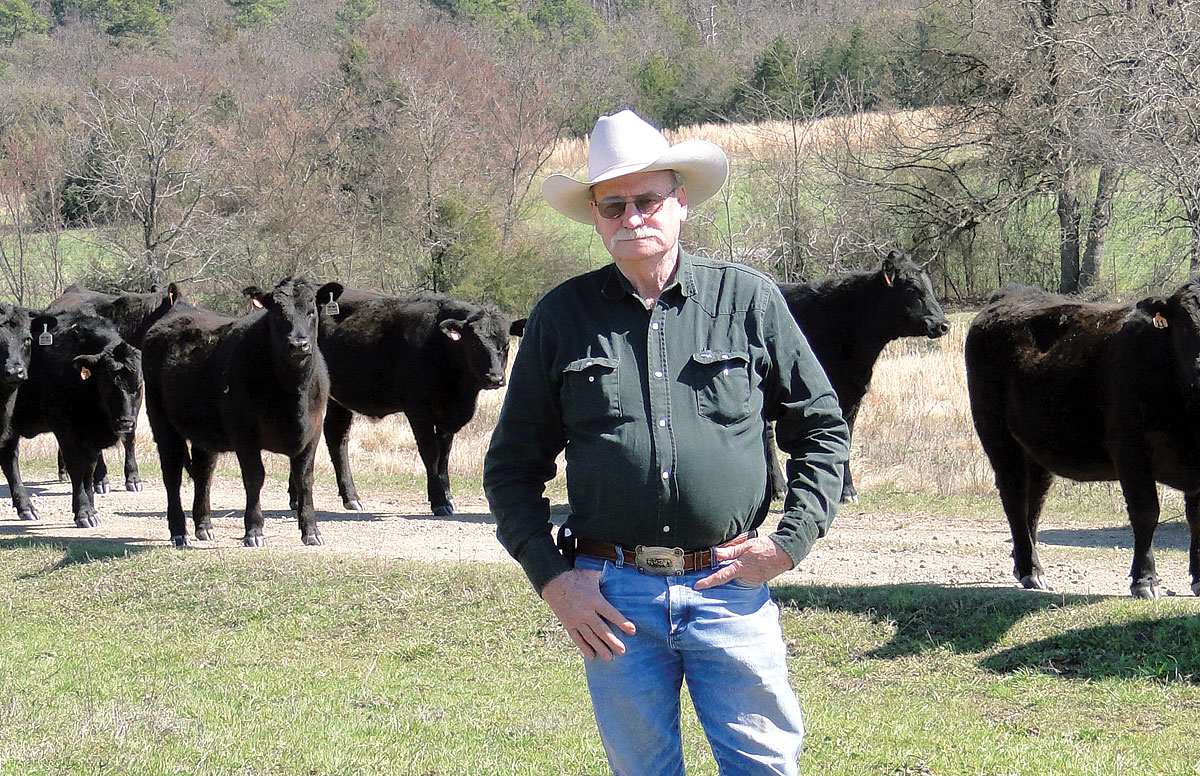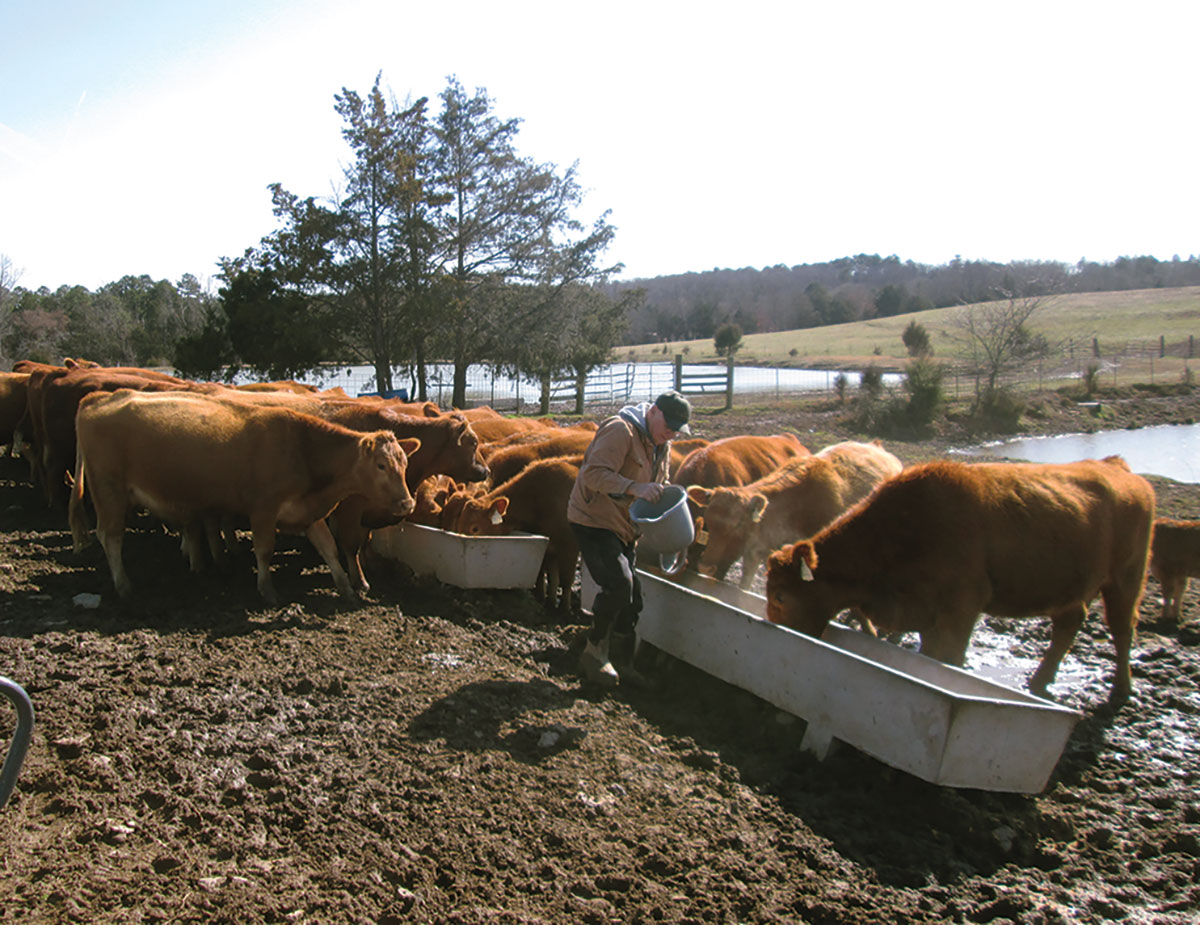
Jess Gatlin’s family has ranched in the Howe, Okla., area since 1951
Jess Gatlin of Howe, Okla., comes from interesting roots.
Loyd, Jess’s father, left home when he was 14 for a bedroll job in Arizona and was in town for two months when his future wife, Margaret from Toledo, Ohio, came to one of the first dude ranches. One night, Loyd roped for the ranches entertainment, then much later married the Eastern girl and started a little ranch.
In 1951, Loyd left Arizona looking for cheap land with good rainfall in Oklahoma, Missouri and Arkansas. They found what they were looking for in the bottomlands of Howe, Okla., for $7 an acre.
Their son, Jess Gatlin, has developed the spread into 900 owned and leased acres.
Loyd had a cousin named Greet. Jess like the man and the name, so he named his own son Greet who in turn provided Jess with two grandchildren: Bethany and Lazarus. Jess and Greet are extremely close, close enough that Jess encouraged his son to follow his own dream to use his intelligence and creativity to enter corporate American without a college education, though he was still a good cowboy.
Greet did so and is now a vice president of a gas company. Jess rodeoed full-time until his 30s and continued bareback riding until his early 40s. Not long ago, Jess saw a tractor coming up the road and then a sign that wished him Happy Birthday as he received the gift of a lifetime. Jess’s life is so much easier now because he has a son who supports his dreams too.
Loyd started with Herefords but found the death loss from anaplasmosis too high, so he talked to Dr. John Montgomery. John recommended some Brahman bloodlines because the Brahman were more resistant to the parasite-caused disease and to flies.
Loyd ran his cattle on open mountain land that had “pretty good graze,” including native grasses like big and little bluestem. The land was routinely burned in order to keep the grasses strong. That area became overgrazed and unburned so that the brush got out of control. Eventually it was purchased and is now used to raise pine trees.
Nonetheless, Jess learned a very valuable life lesson on that mountain, a lesson he didn’t appreciate until years later. When his father would go up the mountain to gather the cattle, Jess was sure his father needed him and insisted on being included, just as he did with breaking horses. Jess fondly remembers breaking his first horse at 9 years old.
“I didn’t realize how much of a pain I was until I had sole custody of 2-year-old Greet,” Jess explained. “He wanted to be part of everything, just as I had done. I was scared for Greet, but remembered how patient my father had been with me. When it came to raising my own son, I remembered what Dad had done and tried to pick out the good parts and not make some of the same mistakes.”
Jess had always told his son to be the best cowboy he could be but also to find a way to make money. Now Jess does both at the same time, making some money off the cattle and working them on horseback.
“I only see two reasons for anyone to walk: you get bucked off or broke down and neither is good,” Jess laughed.
Having quit running stockers a few years ago, Jess now runs 110 mommas and 20 replacement heifers, as well as two Angus bulls: an Angus/Simental cross and a registered Angus bull. He recently purchased three more black bulls. Some of the Charolais bloodlines are still in the herd and Jess believes some of his most reliable and best producing cows come from them.
The market, however, demands black cattle, which Jess maintains is not only because of the Angus Association’s excellent marketing strategy but also because of the thorough job it has done with making statistical information available through EPDs.
Jess’ breeding goals are to have strong and growthy calves through hybrid vigor. To accomplish this, he fertility checks his bulls and preg checks his cows, culling those who do not breed back. Health is promoted through a strong vaccine program and Vigortone loose mineral because he believes changing is not worth the risk in spite of the cost.
Jess runs a spring calving season from Feb. 1 to the end of March so the calves are ready to graze when the grazing starts to be good. Market calves are sold off the mommas at 7 to 8 months or after backgrounding at 650 pounds, which means he doesn’t have to feed them during the winter. He does, however, keep replacement heifers and breeds them at 15 months so they give birth when they are 2 years old.
“I prefer to sell here at the house because I have trouble filling the truck with heifers and steers, but I sometimes sell at auction,” explained Jess.
To protect land productivity, Jess limits winter pasture access until there’s sufficient growth on the grass. He fertilizes on a hit and miss basis with his neighbor’s chicken litter and believes that the quality of his land makes a tremendous difference in terms of fertilizer needs. He plants some ryegrass every four years or so to provide early grazing, planting ladino and arrowleaf at the same time. He also brush hogs rather than sprays because the land was brush hogged for so many years that the root system is too developed for the poison to go down deep enough to be effective. He also has the land divided into 18 pastures and rotates “by feel” which turns out to be about every six weeks. For convenience, he keeps the herd together for most of the year and rotates them together.
“My life is good,” Jess said with a smile. “Ranching may be a poor way to make a living, but it’s a great way to live.”







After watching Yellowstone, I had to look you up, Jess. Thanks for the ride on tha horse, showing me the Gatlin country, and for letting me into the family. Your mom once pointed out a cayote about a quarter mile from the house, looking south.. from her chair on the porch… and I thought.. how could she see that !?! Thanks for the experiences.. but especially for the cutting horse ride up in your hills. I promised not to tell GG that I was on.. Sorry if I rode too slow and the nasty school bus beat us to the dismount 🙂 No better educator than experience. Peace, Steve from the big town of Poteau. Hope you are still writing.